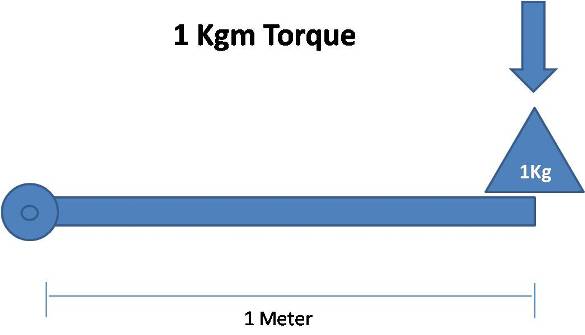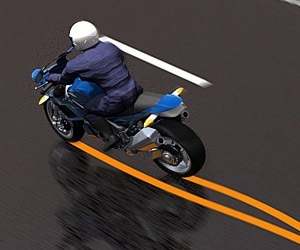Demystifying "Torque" and what "Nm" and "Kgm" means.. in simple English
Power and Torque are two terms that are always mentioned to convey the performance of the engine of an automobile. I had earlier posted on the difference between power and torque, and today let me post on how to physically visualize Torque.
"Torque is the simply the force which is responsible for twisting the wheels on your bike".
One easy way to visualize torque is to see the photo posted below in which the rider is performing a tyre burnout.

How is torque produced in an Internal Combustion engine?

The vertical (up-down) motion of the piston inside the combustion chamber produces the torque.
It is exactly for this very reason why engines with "long stroke" engines (like Royal Enfield bikes) are rich in torque and are good for cruising at relaxed speeds.
The vertical motion of the piston is converted to rotational motion which is transferred to the gearbox and then to the wheels.
Photo Source: HowStuffWorks.Com
How to visualize the Torque units as mentioned on the Technical Specifications page
Torque units are usually mentioned in Nm (Newton Meter) or in Kgm (Kilogram Meter). There are other units too but the above two units are mostly used in India to represent as the unit for Torque.
Consider that there is a 1 meter long rod which is fixed at one end and the other end is free to rotate. Torque figure of "1 Kgm" can be visualized as the twisting force which is developed due to a weight of 1 Kg acting at the movable end of the 1 meter long rod.

Eg: The Hero Honda Splendor has a Peak Torque figure of 0.78 Kgm, which means that the Peak Torque developed on the Splendor is equivalent to around a weight of 780 gms acting on the momovable end of a 1 meter long rod.
To convert Kgm (Kilogram meter) to Nm (Newton meter), just multiply it by 10 (the exact conversion would be to multiply by 9.81, but 10 times is practically quite close).
And to convert from Nm to Kgm just divide by 10.
Eg: The Pulsar 220 DTS-i develops a peak torque of 19.1 Nm, which means around (19.1/10) =1.9 Kgm. So one can visualize the peak torque of the Pulsar 220 as a weight of 1.9 Kg acting on a the end of a 1 meter long rod.
I hope I was able to make the concept of "Torque" easier to understand.
Related Posts
- What is the difference between Power and Torque of a motorcycle?
- What is a Long Stroke / Short Stroke Engine? Which is better?
- What is Engine Knocking? Do you really know?
Disclaimer:
This is to remind that the Views or Opinions in the blog are entirely mine unless explicitly stated. The Views and Opinions published in this blog should in no way be related to any other person or organization associated -- directly or indirectly -- with me.












10 Comments:
Cool. Now my understanding is better :)
As usual very informative there bro!! :)
Good one, SP!!
Awesome gyan there. Very easy and lucid explanation. This is definitely the best motorcycle blog of India
i was just trying to remember where i saw this picture of cylinder and the link besides helped me to remember right! nice one!
no doubt torque is responsible for distinguishing the velocity in different auto vehicles......
very useful and easy to understand thanks
man! u r an amazing physics teacher.even i hadnt understud it in my high school
yeah..........
As in the second example, Pulsar 220 DTS-i develops a peak torque of 19.1 Nm. I was wondering where this force is measured. Is it at the wheel or engine shaft?
Nicely narrated. Simplicity is the key to understanding all things. Nicely done.
Post a Comment
Your Comments are valuable as they keep the conversation alive..
But Please Comment Responsibly (for them to be published)